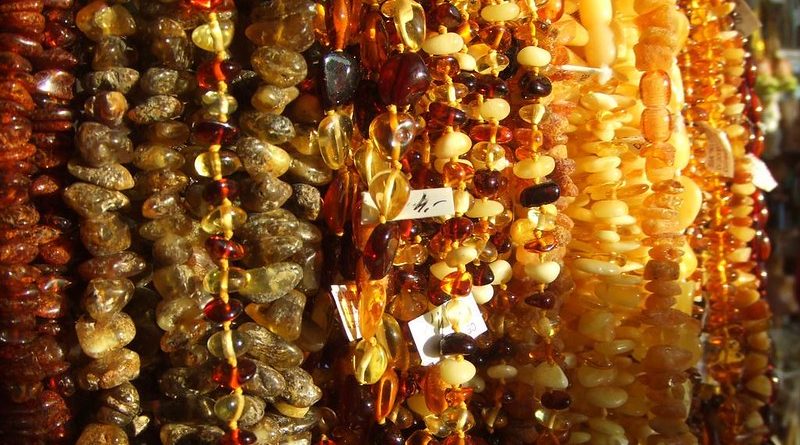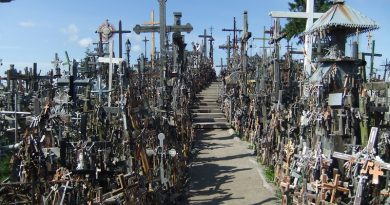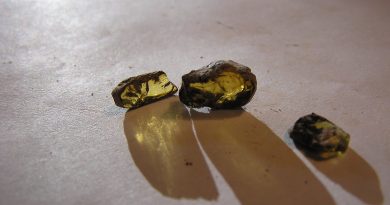The Magical Powers of Amber from Riga
Shopping Essentials
Where: Riga Central Market, Estonia, Eastern Europe
What’s in store: Amber stones and jewellery, fossilised golden resins with preserved creatures
Bag a bargain: Head to the market or St. Peter’s church – avoid hustlers or cheap plastic imitations
Where It’s At
Riga is commonly known as the Paris of Eastern Europe. It’s a cosmopolitan mixture of Russian, German and Latvian influences. One of the city’s highlights is the Riga Central Market that takes place around several WWI Zeppelin Hanger. The best souvenir to buy here is Amber; it’s washed up along the Baltic coast where locals collect it to sell to tourists. This amber has made the region renowned amongst jewellery lovers, traders and archaeologists.
What is Amber?
Amber dates from pre-historic times, a staggering twenty to fifty million years old. It is fossilised resin of ancient conifers tree, formed by pressure and time. The transparent, glowing flame-coloured jewel preserves within itself the remains of many insects, spiders and small vertebrates. Air bubbles in the oils cause an entrancing white pearling effect through the amber. In folklore, the powers attributed to the jewel include love, strength, luck, healing and protection, calming for hyperactivity and relieving stress. Amber was also believed to provide magicians and sorcerers with special enhanced powers. It is a very soft substance and should be worn with care to prevent marring the stone.
History and Origins
Trading in amber probably started in the New Stone Age. During different stages of history and in many parts of the world, amber has been used as money, as jewellery or ornaments, and even as a medicine. Beads made from Baltic amber have been found sealed inside tombs built on the Greek island of Crete around 1000 BC.
In ancient Rome, women wore amber medallions as a remedy for sore throats or swollen glands. In the East, there was a belief that amber smoke strengthened the human spirit and imparted courage. In China “amber syrup”, a mixture of amber extract and opium, was used as a tranquilizer. Even as recently as the 1930s German mothers were putting amber beads on their babies to make teething less painful and teeth grow stronger.
Whatever its mystical or medicinal powers, amber is truly beautiful to look at. Scientists have named at least 250 colours or shades, and if you look at amber jewellery close-up you’ll see that its colour can change with the light. Its shades range from greenish to a warm, reddish orange, and pieces can often include tiny insects, flowers or pieces of bark which were trapped when the sticky tree sap fell to the forest floor millions of years ago.
The amber found in the Baltic region comes from an ancient pine forest that once grew in the northern part of Scandinavia. Pieces of amber were washed out of the soil by two ancient rivers, which carried it down to the Baltic sea. As thousands of years passed, the amber was taken by the currents and built up within the soil along the Baltic coast, where traders learned to dig for it, or to go prospecting in the sands. There are still rich deposits of amber in the Baltic, and, even now, strong gales or violent storms can bring a harvest of amber nuggets onto the beaches of Latvia, Estonia and Lithuania.
Where to Bag a Bargain
You might like to go prospecting along these coastlines yourself. However, an easier way to find amber when you’re exploring the Baltic region is to spend some time in the Latvian Nature Museum in Riga, the Liepaja Museum of Art and History, the Latvian History Museum or theLatvian Institute of History, where the largest archaeological amber collections are held. If you’re travelling to Lithuania, you could visit the Amber Museum in Vilnius.
The trade in amber jewellery has grown with increased tourism to the Baltic states, and in most cities you’ll find shops and market stalls selling beautiful, locally-made pendants, rings, brooches and beads. There are some twenty amber stalls behind St. Peter’s Church in Riga and even more private traders who will hustle any tourist on a stroll through Old Riga to buy their amber.
How to Spot a Good Buy
Have a sharp eye as some amber resembles heavy resins like plastic. Look out for a white pearling and sediment within the resin.
More Information
Jayvo Designs
Baltic amber jewellery collection – not just beautiful jewellery but works of art.
Latvia In Your Pocket
The ultimate city travel guide
By Susi O’Neill




